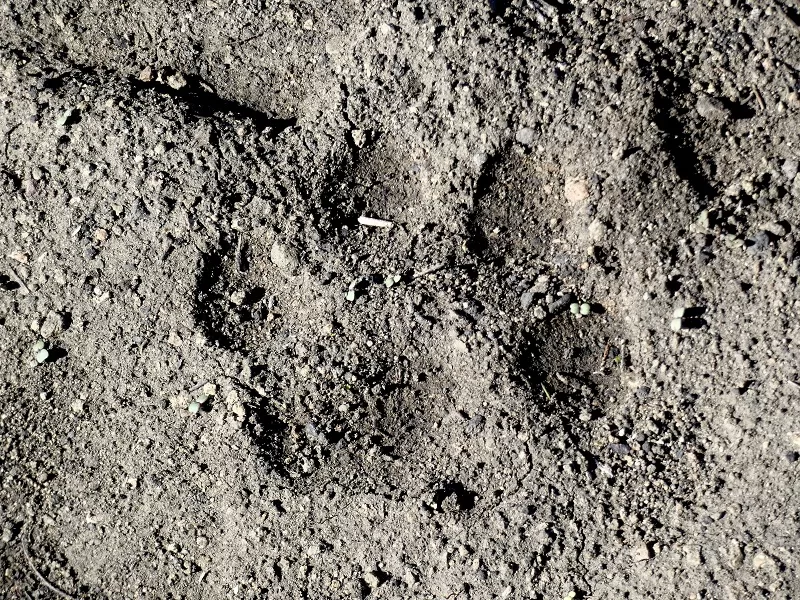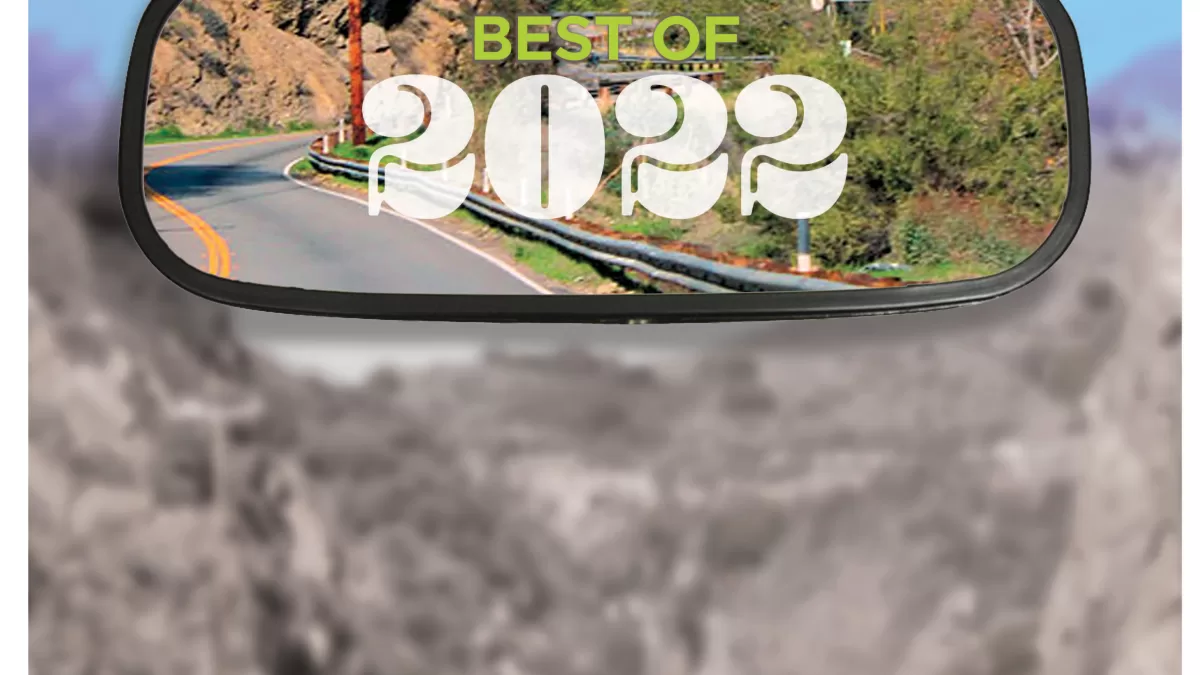How are we already at the end of the year? 2022 was a strange roller-coaster ride, but it wasn’t all bad. In our last issue of 2022 we look back on some of our favorite, most hopeful and most relevant stories from the past year. We also look ahead to the future, as we get ready for a new year, one with challenges but also the potential for amazing things. Happy New Year! Here’s to 2023! Cover design: Urs Baur
The death of mountain lion P-22 sent shockwaves of grief not only through the Los Angeles conservation community but around the world. This amazing cat who somehow managed to travel from his birthplace in the eastern Santa Monica Mountains across freeways, and through densely developed urban areas to live a solitary life in Griffith Park for more than a decade touched the hearts of many.
I’ve written a lot about P-22 over the past decade and have known many of the people involved in monitoring this remarkable big cat over the years. I know they made the humane and ethical decision to end his suffering, but I have no words to express how I felt when the news was released that he had been euthanized. I am glad he is free of pain, but heartsick that the serious injuries and illness that led to the decision to euthanize him in the end were caused by the two biggest threats to local wildlife: vehicle strikes and rodenticide.
P-22 had a long life for a wild mountain lion, and he was suffering from conditions familiar to many of us who own (or are owned by) domestic cats, including arthritis and kidney failure, but it was the massive damage from the vehicle impact that led to the decision to euthanize him. Secondary to that, his body also showed the ravages not only of time but of constant contact with rodenticide, including debilitating mange. After 10 years as the only wild mountain lion in Griffith Park, P-22’s luck had run out but his legacy will live on.

We need to work faster and harder to improve connectivity, build wildlife over (and under) passes, and preserve wildlife corridors and key habitats to ensure that there will be a place for our native big cats in Los Angeles Count and everywhere they roam. We need to permanently and completely ban toxic rodenticides statewide.
P-22’s life touched people around the world. It’s up to us, to all of the people who cared about this big cat, to make sure his legacy will be a better world for wildlife. The tireless crew of supporters and volunteers P-22 has inspired have raised awareness and shown us the way. We can do this.
There was good news for captive big cats just days after the tragic news of P-22’s death. President Joe Biden has signed the Big Cat Public Safety Act (H.R. 263) into law, prohibiting the private possession of big cats and making it illegal for exhibitors to allow direct contact with cubs.
“The Big Cat Public Safety Act provides a clear framework for protecting big cats in the U.S. who have been vulnerable to the perils of private ownership due to a patchwork of state laws that have been inadequate in protecting animals and ensuring public safety,” writes Animal Legal Defense Fund Executive Director Stephen Wells.
At the UN Biodiversity Conference (CBD-COP 15) in Montreal, 190 countries showed a commitment to preserving wildlands and wildlife, agreeing to a landmark agreement to protect 30 percent of Earth’s land and water by 2030. The only two nations that declined to sign were the U.S. and the Vatican.
Although the US didn’t sign, President Biden has shown a commitment to the 30 x 30 initiative by appointing a special biodiversity envoy, and he has included 30 × 30 goals in his America the Beautiful initiative. California Governor Gavin Newsom is also committing funds and resources for 30 x 30 in California. Will we get there by 2030? Will it be enough to preserve connectivity and habitat for species like mountain lions? It will, if the people who love and care about the environment—from a mountain lion like P-22 to the smallest native bee—come together to help make it so. We can do this.
This is an unusual issue of TNT. In a way, it’s a retrospective on the features we published this year, but it is one that looks forward to a better future and to the edge of the known universe. We’re revisiting some of our favorite stories: the Patagonia legacy written by Claire Chapman, a futuristic column and a favorite story from the archives of historian Jimmy P. Morgan, and our features on the Webb Space Telescope and our local space race history. These are all stories that share our 2022 theme of “Changemakers”. They all celebrate how far we’ve come, while looking ahead to how far we still have to go. From here, the future looks both terrifying and amazing.
We wish all our readers a bright, joyful, happy New Year, and all good things in 2023!
Stay safe, be well. Happy New Year!














I did give gypsy boots a surfing lesson for Life Magazine. He had just started selling his energy bar.